I heard that this crab also has antioxidant properties?
How important is oxidation resistance for skincare?
Oxidized apples turn yellow and brown, oxidized iron rusts, and oxidized skin ages, becomes dull, and sensitive... Over 75% of skin aging is related to "oxidation." It can be said that oxidation is the number one killer that accelerates aging.
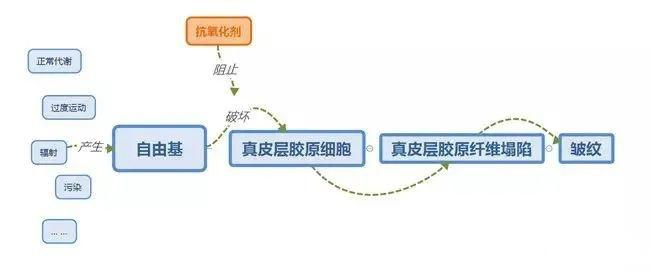
What does antioxidant resist?
Antioxidant does not resist oxygen, but rather reactive oxygen species (ROS) that cause damage to the body. Reactive oxygen species can be divided into "free radicals" and "peroxides that easily form free radicals." Therefore, in a sense, antioxidant is anti-free radical.
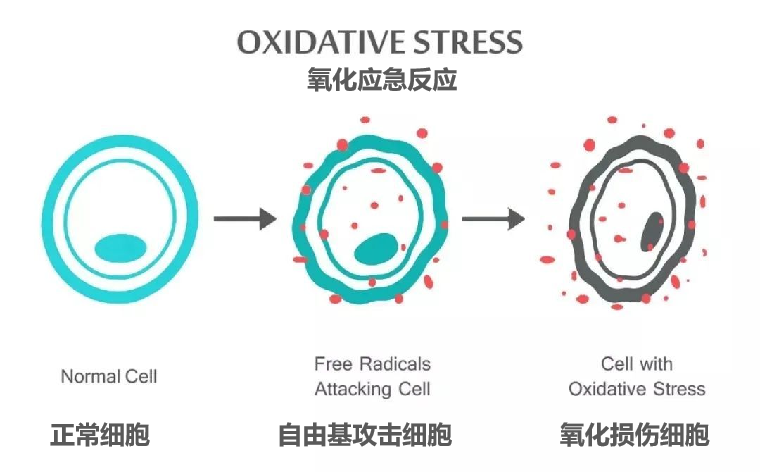
Where does reactive oxygen come from?
Being alive produces reactive oxygen: Reactive oxygen is produced in all oxygen-involved physiological activities in the human body, including breathing.
Internal and external pressures: UV radiation, environmental pollution, radiation, smoking, oil fumes, stress, staying up late, and unhealthy eating habits can all lead to the generation of excessive free radicals.

Factors that induce free radicals
Antioxidant leader EUK 134
Returning to the world of cosmetic ingredients, there are many antioxidant members, and EUK 134 is one of them.
The chemical name of EUK 134 is [Ethylenediaminetetramethylene-bis-hydroxy-4-methylphenol manganese chloride]. Its molecular structure is like a crab with outstretched claws. The center of the crab is the active catalytic site - the Mn manganese atom.

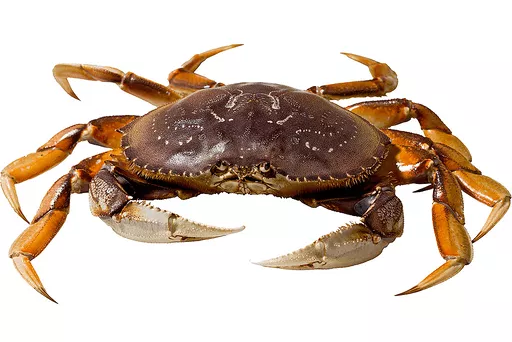
Key point: Active catalysis
Ion
Through the redox cycle of Mn (II), superoxide anion (O 2 - ) is converted into peroxide (H 2 O 2 ) , and then hydrogen peroxide is converted into water (H 2 O), the whole process is similar to SOD and CAT combining to fight monsters.
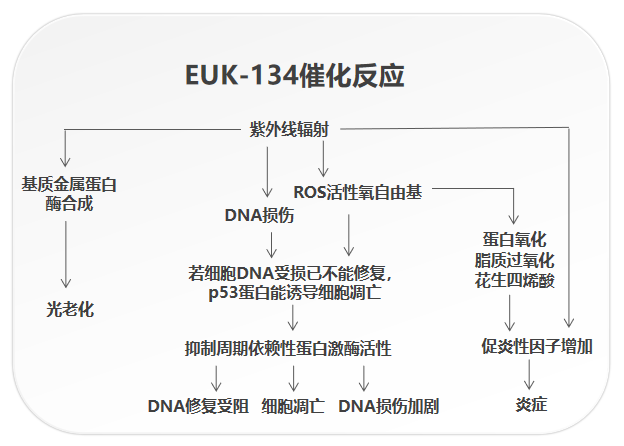
Advantages
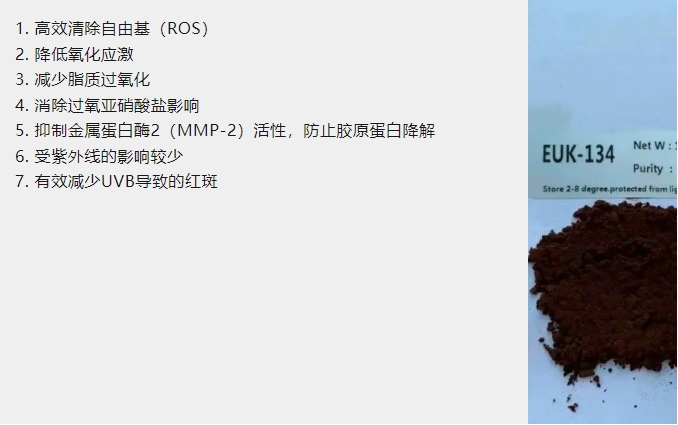
Efficacy
EUK134 has a very special antioxidant capacity. It can brighten skin tone, combat photodamage, prevent skin aging, and relieve skin inflammation.
It can simulate the effects of SOD and CAT, two enzymes. "Superoxide dismutase (SOD) and catalase (CAT)" work together to eliminate "ROS." "EUK-134" can do this alone and has a better antioxidant effect.
Dual effect
Superoxide dismutase (SOD) and catalase (CAT)
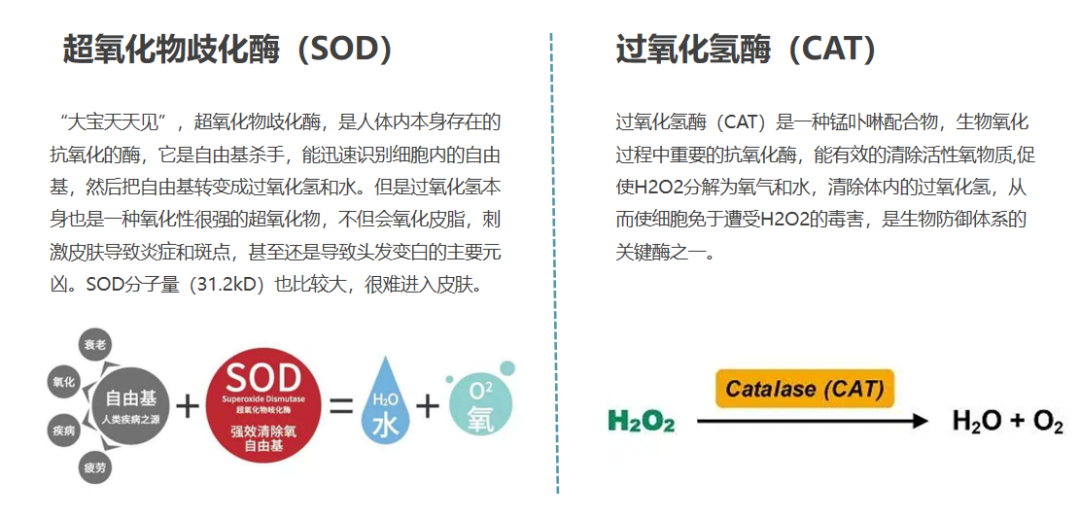

Most people are familiar with SOD, which is the SOD in "Dabao SOD Honey." These two ingredients work closely together to clear away "ROS (reactive oxygen species)" produced during metabolism, maintaining normal body metabolism.
However, SOD has a large molecular weight and is difficult to penetrate the stratum corneum, mostly remaining on the skin surface and unable to enter the skin to exert its effect. In addition, SOD has poor stability. After production, after a long storage and shelf life, only a few retain their activity. Even if a small amount enters the skin through pores and sweat glands, it is easily hydrolyzed by proteins, has poor stability, and is metabolized quickly in the human body. These characteristics hinder the application of SOD in cosmetics.
Catalytic regeneration
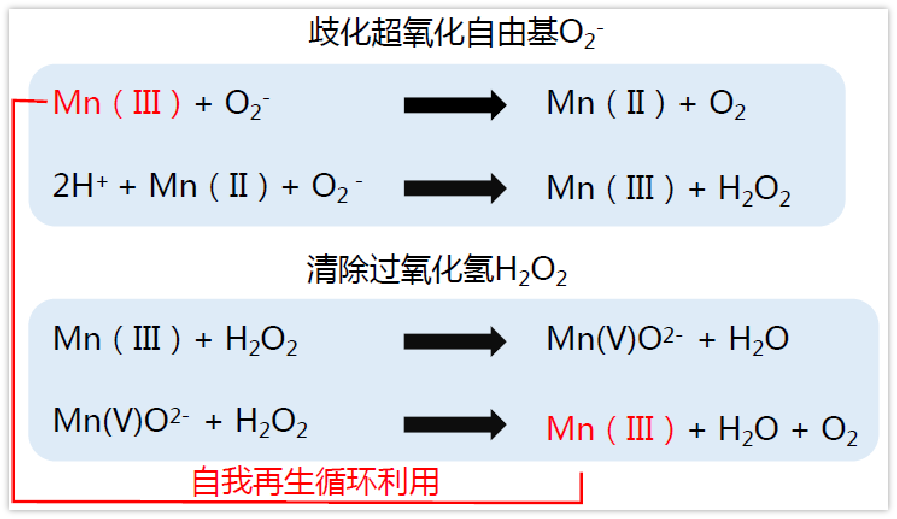
Valuable is that EUK 134, like an enzyme, has amazing regenerative ability, directly converting free radicals into water and oxygen, and remaining unharmed itself.
It is essentially a catalyst. After the reaction, the quantity does not decrease, and it can be used repeatedly. A small amount can be effective for a long time. Unlike VC, astaxanthin, and idebenone, which are self-sacrificing antioxidants, they are oxidized while resisting oxidation.
Because it does not need to consume itself, it can be reused, and its work efficiency is higher. In cosmetics, only 0.01% can exert a good antioxidant effect. That is to say, once EUK 134 is added to the formula, as long as it is not absorbed or washed away, it can stay on for a long time!!!
Precautions
Although EUK 134 is powerful, it is not omnipotent. There are some things to note.
Compatibility: EUK-134 is slightly acidic and easily decomposes and becomes ineffective.
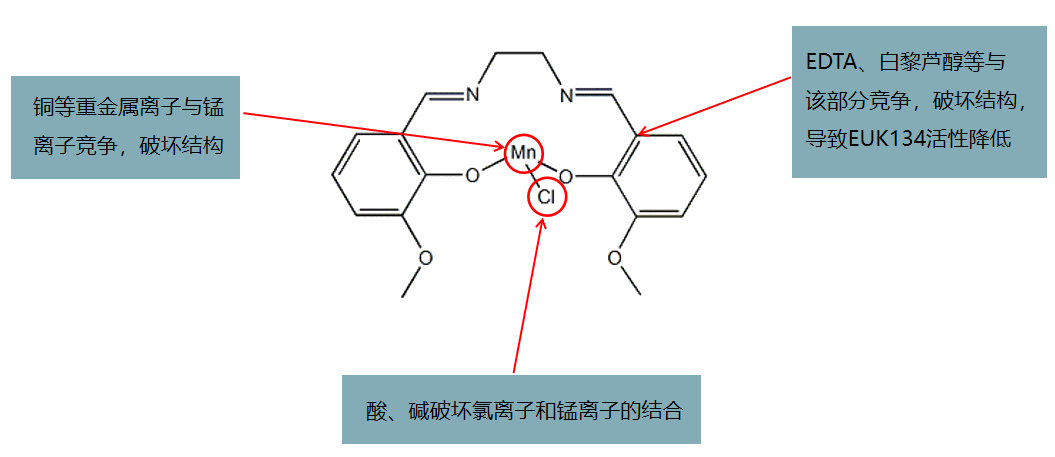
1. Do not use with VC products (especially original VC);
2. Do not use with salicylic acid, fruit acid, mandelic acid, azelaic acid, α-lipoic acid, ferulic acid, etc.; (acids and alkalis destroy the combination of chloride and manganese ions);
3. Do not use with copper peptides, etc.; (heavy metal ions will compete with manganese ions, destroying the structure);
4. Do not use with resveratrol, EDTA, and other chelating agents; (will destroy the structure, causing EUK134 activity to decrease)
Summary
1. Various acids (pH is acidic) will destroy manganese-based EUK-134;
2. The recommended system pH is in the range of 6.0~8.0;
3. The product may also be unstable in water, it is recommended to use a polyol system.
Market cases
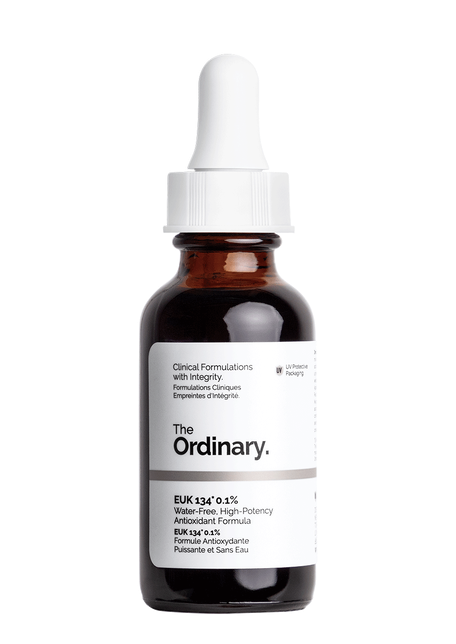
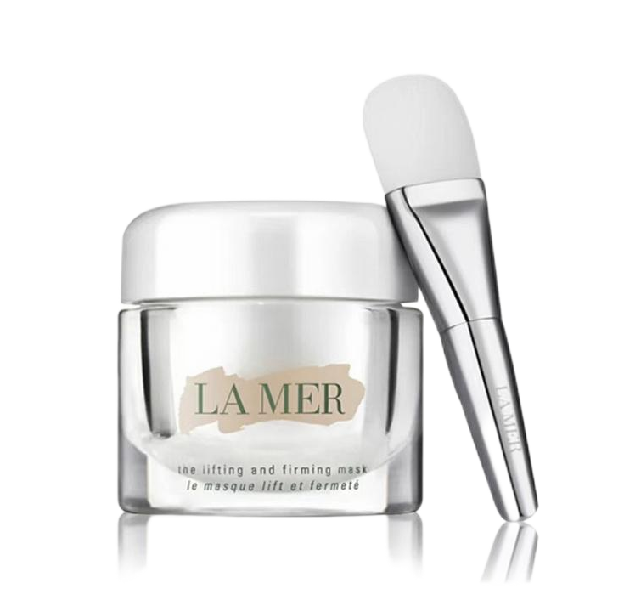
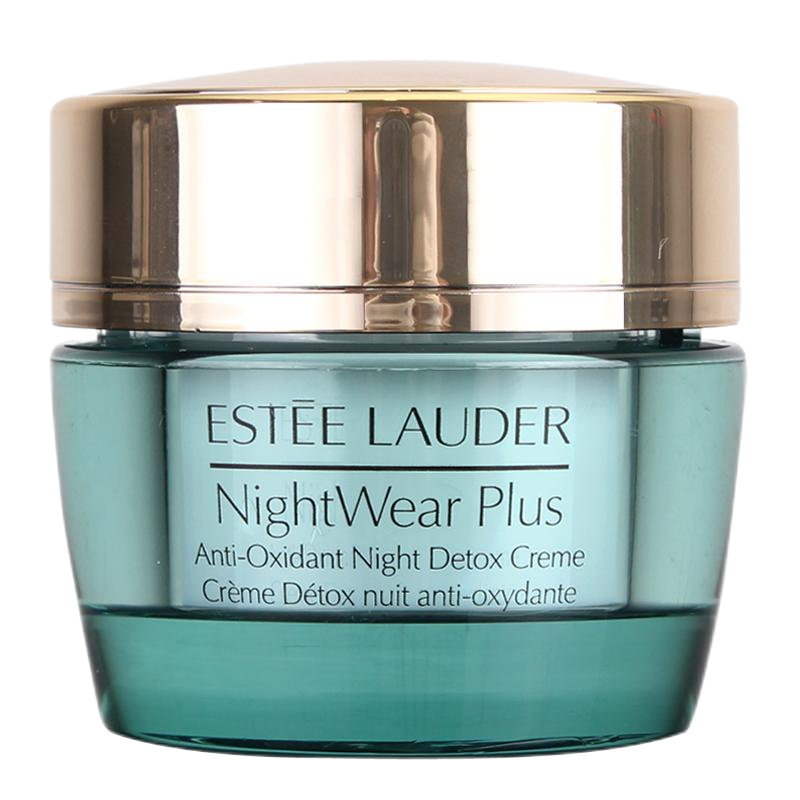
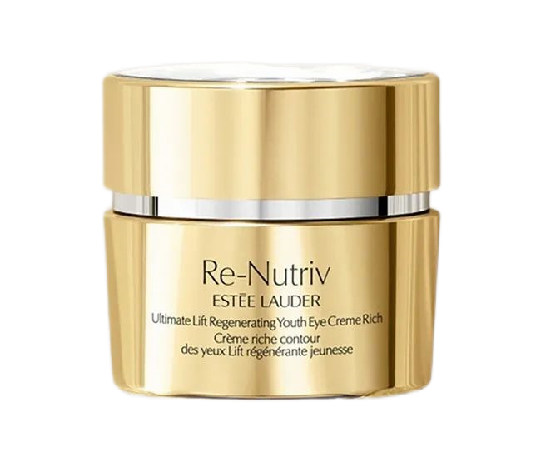
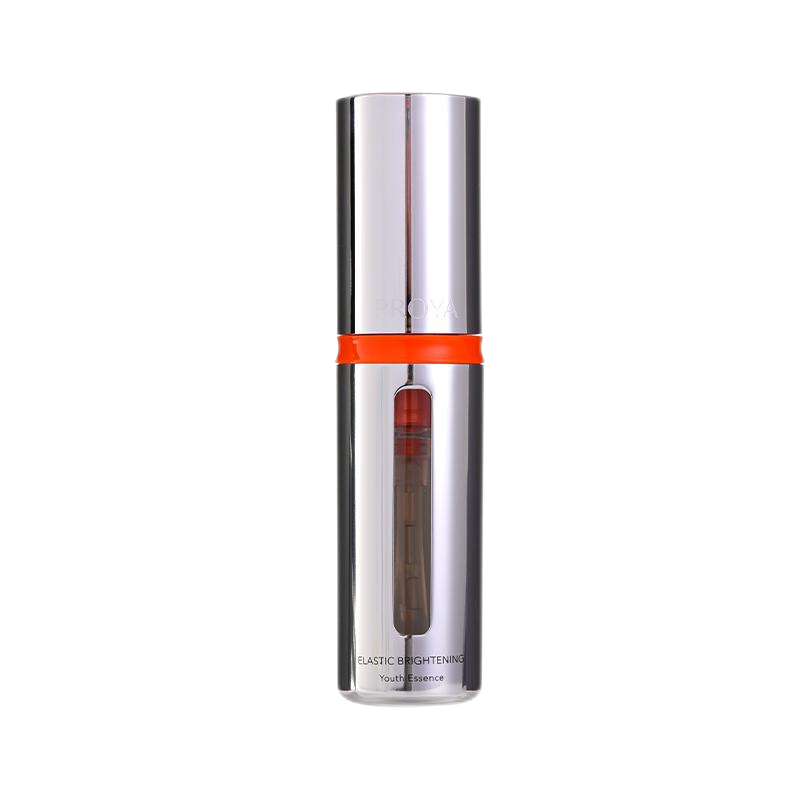
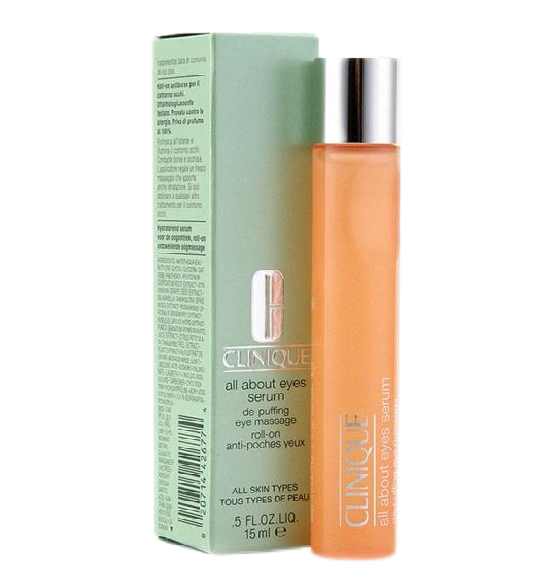

Welcome to follow our company's WeChat official account to learn more about the latest product information!
More Explore







